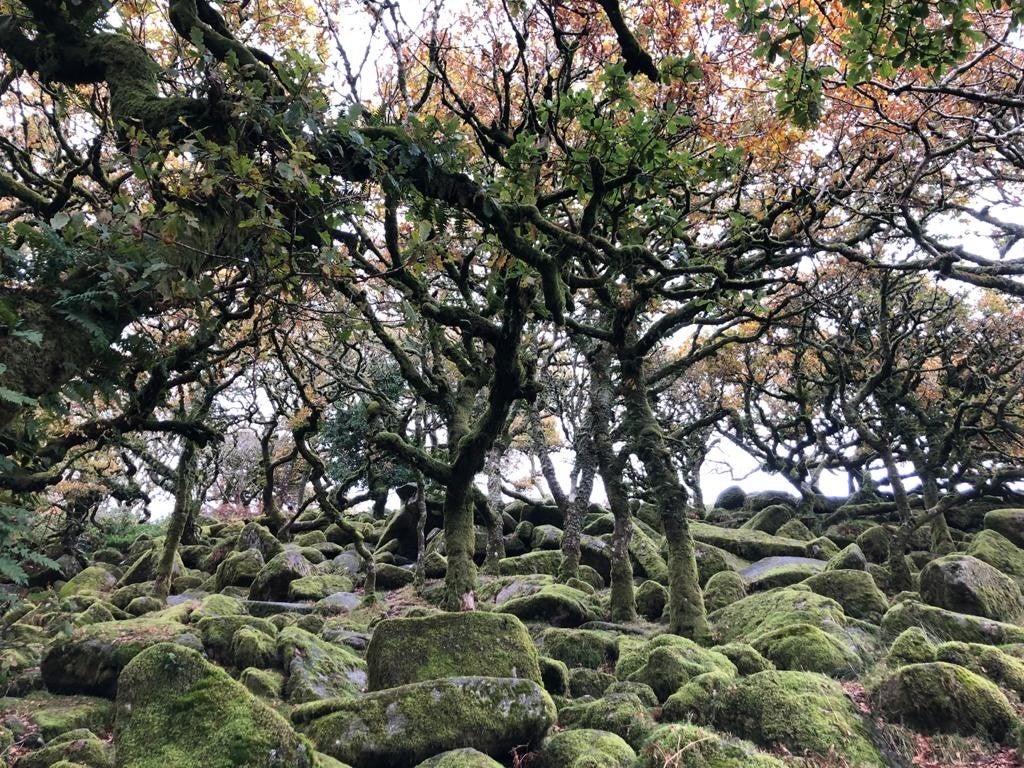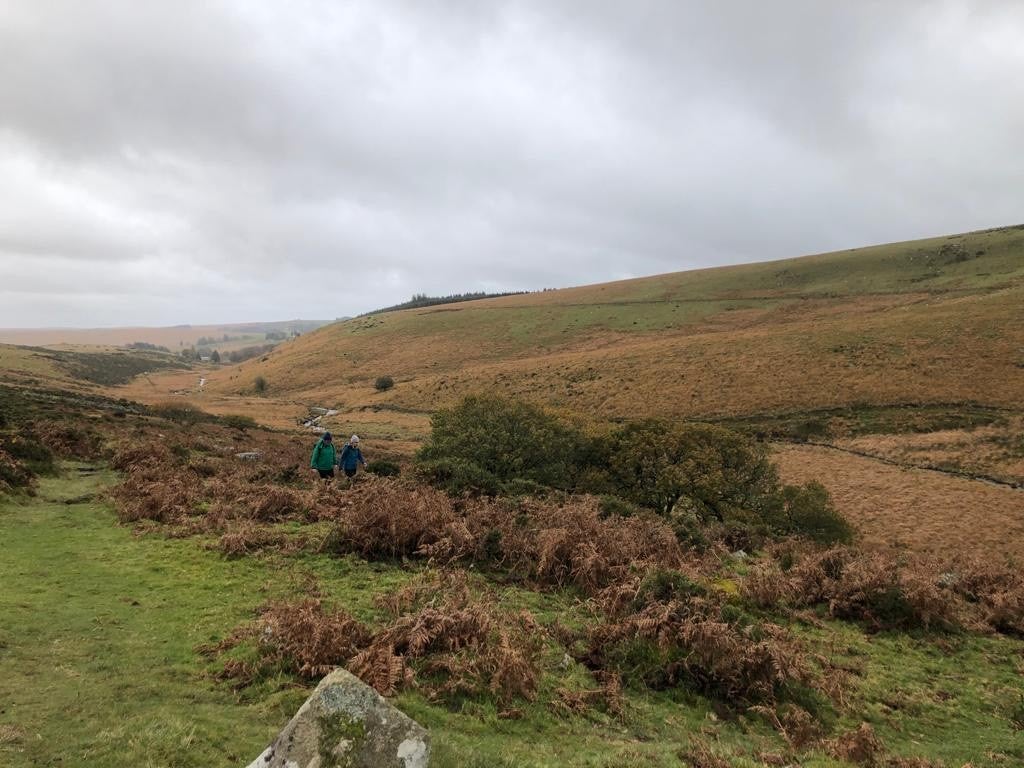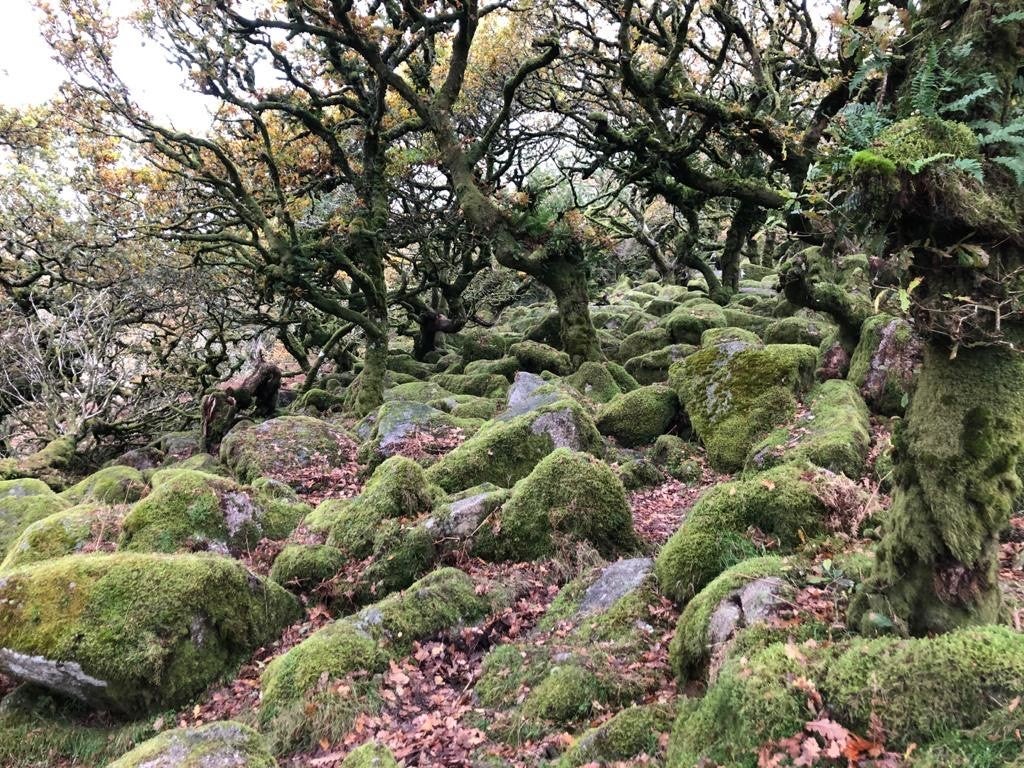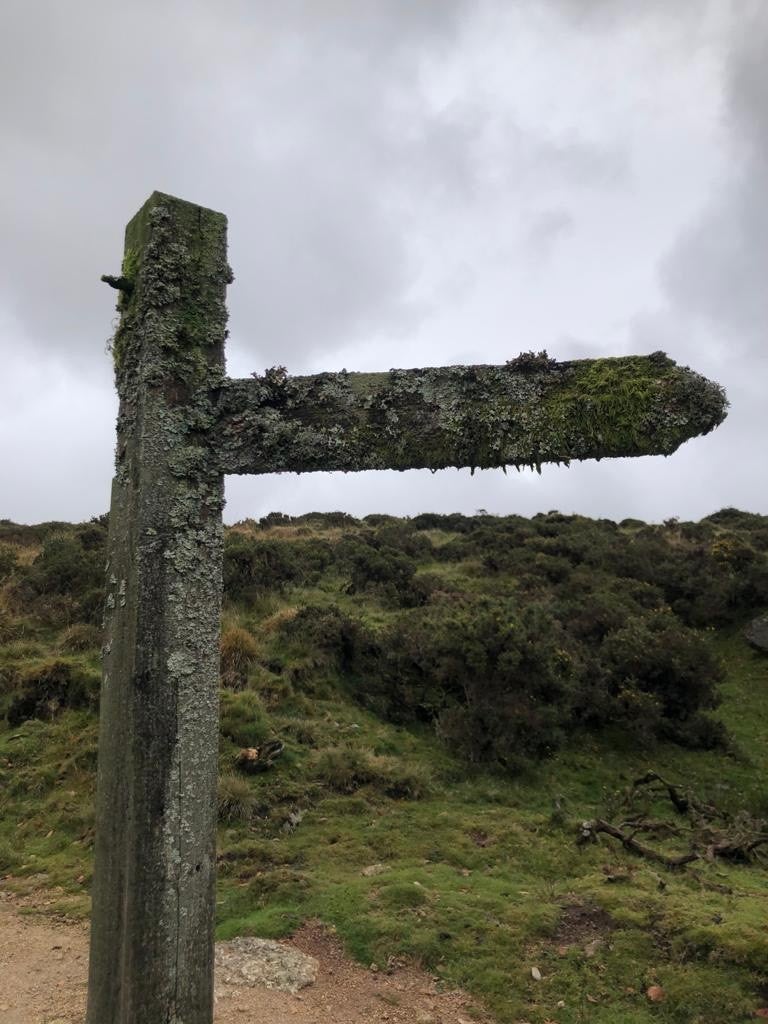Human sacrifice and pagan rituals: A walk through Dartmoor’s haunted wood
Jonathan Evans explores Devon’s unsettling Wistman’s Wood, home to stunted oak trees and tales of human sacrifice

The winter sun was still asleep behind the thick grey sky, and as we walked, a cloud of our breath emerged. At least, we told ourselves it was breath and not a ghost. It’s hard not to let your imagination get the better of you when you’re walking to one of the most haunted places in Britain.
On the eastern slopes of Devon’s West Dart River, sandwiched between the towns of Princetown and Postbridge, stands Wistman’s Wood. Believed to date back to 7000 BC, this 3.5-hectare woodland on the southeastern edge of Dartmoor has been left to grow free from human intervention thanks to the large, moss-covered boulders that line the forest floor. And with unfettered growth, the dwarf oak trees – an average of 7m tall – have become gnarled, with their finger-like branches contorting around one another like a scene from a Grimm’s fairytale.
Given its unearthly appearance, it is little wonder that many supernatural tales are attached to the wood. The early 19th-century writings of local historian Eliza Bray suggest the Druids conducted human sacrifices in the wood eight centuries ago; Devon folklore claims the devil and his hell hounds, with blood-red eyes and fearsome yellow fangs, roam the land looking for wayward travellers.
Yet, as we set off from the Two Bridges Hotel and walked along the footpath towards the wood, it was hard to match the stories with what we could see and hear. It was peaceful. Songbirds circled above, their voices trailing up and down the scales like an orchestra coming into tune. The river washed through the valley. Black cows and sheep grazed on either side of the water, greedily eating the rust-coloured grass.
In spring and summer, wildflowers cling to every rock, erupting into colour. But in the winter, the view is of ferns and gorse. They pop out of the earth in every direction, drooping over the valley as if in mourning. We passed a traditional stone farmhouse and followed the footpath alongside the cottage garden wall until we hit a sign covered in such thick moss it resembled a salvaged piece of a sunken ship.

After 20 minutes of walking, we caught our first glimpse of Wistman’s Wood on the other side of the valley. It looked dark and haunted: the crooked branches of the oak trees create an oppressive canopy which, from a distance, makes the wood look like an overturned bird’s nest.
At this point our walking boots were essential, as the footpath ended and we crossed the open moorland and its sodden soil until we reached a stone wall.
It was at this moment that the paranormal stories of Wistman’s Wood began to make sense. The wall felt like a partition between our world and the mystical world of the wood. Behind us, birds circled the sky and the river meandered through the valley. But in front of us, all we could see were granite boulders in no discernible pattern, jutting out of the earth all the way towards the entrance of the wood.
At first glance, the boulders set along the entrance and floor of the wood look identical, but they’re not. According to Eliza Bray, the Druids conducted pagan rituals within the wood, carving spirals and symbols into the moss that can still be seen today – most clearly in a huge boulder known as “The Druid’s Stone” or “The Buller’s Stone”.

However, the spirits of Druids and their victims aren’t the only beings to wander the wood, according to the author and folklorist Jennifer Westwood. In her book Albion: A Guide to a Legendary Britain, Westwood retells the mythical tale that, come nightfall, the wood becomes the kennels of Wisht Hounds – dogs with huge fangs and a bone-chilling howl – who hunt across the leaf and moss strewn moors for lost travellers. It’s an ancient but pervasive legend, with locals still reluctant to venture to the wood once the sun goes down.
Thanks to its bloody history, the local reverend in 1791 declared that “it’s hardly possible to conceive anything of the sort so grotesque as this wood appears”.
And yet, as we reached the wood and gazed at the twisted and gnarled branches of the stunted oak trees, grotesque wasn’t the first word that came to my mind.

It was odd-looking, though. The trees contort themselves around one another, with the last of their silver leaves clinging onto them before dropping onto the floor. Boulders stick out of the ground like remnants of an asteroid shower – the stone colour long-lost underneath layers of slippery, fuzzy green moss. Lichens adorn the aged branches, hanging off and swaying in the wind like layers of witches’ hair, bilberries grow on the rocky floor, and ferns extend out of the trunks, watching anyone who enters the wood.
We clambered through, losing our footing on the moss from time to time, trying to find a boulder with enough stone remaining so we could stop and take in the surroundings. The wood was engulfed by a rich smell of earth and age, and as we sat on a boulder on the edge of the wood, we watched the water run down the West Dart River towards the Two Bridges Hotel where we’d started our walk. One day, we’ll make it back to order a Devon cream tea: a tonic after a day exploring the unsettling Wistman’s Wood.
Join our commenting forum
Join thought-provoking conversations, follow other Independent readers and see their replies
Comments


Bookmark popover
Removed from bookmarks